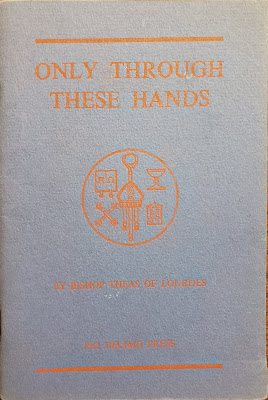Commemoration (1954 Calendar): October 7
Commemoration (1962 Calendar): October 8
In addition to the great celebration of Our Lady of the Rosary, today's liturgy includes a Commemoration of Pope St. Mark in addition to a Commemoration of Ss. Sergius and Bacchus and Ss. Marcellus and Apuleius. The 1960 Breviary moved the Commemoration of these holy martyrs to October 8th due to a rubric change made in 1960 that allows only one commemoration on days of the II class, and October 7th kept the Commemoration of St. Mark.
The following is taken from their account in the Roman Martyrology:
"In lower Syria, the holy Martyrs Sergius and Bacchus, noble Romans, who lived under the Emperor Maximian. Bacchus was scourged with thongs that tore his flesh; he died in his torments confessing the name of Jesus. Sergius, forced to wear shoes with nails piercing his feet, remained firm in the faith and was beheaded. At Rome the holy Martyrs Marcellus and Apuleius abandoned Simon the Magician, whose disciples they had been, to follow the teaching of St. Peter. After the martyrdom of the apostles they themselves obtained the same crown under the ex-consul Aurelian and were buried near Rome."
The Catholic Encyclopedia also bears witness to their lives and mentions how these saints, whose names are surely forgotten by nearly all today, were honored since ancient times:
"Their martyrdom is well authenticated by the earliest martyrologies and by the early veneration paid them, as well as by such historians as Theodoret. They were officers of troops on the frontier, Sergius being primicerius, and Bacchus secundarius. According to the legend, there were high in esteem of the Caesar Maximianus on account of their bravery, but this favour was turned into hate when they acknowledged their Christian faith. When examined under torture they were beaten so severely with thongs that Bacchus died under the blows. Sergius, though, had much more suffering to endure; among other tortures, as the legend relates, he had to run eighteen miles in shoes which were covered on the soles with sharp-pointed nails that pierced through the foot. He was finally beheaded. The burial-place of Sergius and Bacchus was pointed out in the city of Resaph; in honour of Sergius the Emperor Justinian also built churches in honour of Sergius at Constantinople and Acre; the one at Constantinople, now a mosque, is a great work of Byzantine art. In the East, Sergius and Bacchus were universally honoured. Since the seventh century they have a celebrated church in Rome. Christian art represents the two saints as soldiers in military garb with branches of palm in their hands. Their feast is observed on 7 October. The Church calendar gives the two saints Marcellus and Apuleius on the same day as Sergius and Bacchus. They are said to have been converted to Christianity by the miracles of St. Peter. According to the "Martyrologium Romanum" they suffered martyrdom soon after the deaths of Sts. Peter and Paul and were buried near Rome. Their existing Acts are not genuine and agree to a great extent with those of Sts. Nereus and Achilleus. The veneration of the two saints is very old. A mass is assigned to them in the "Sacramentarium" of Pope Gelasius.:
Collect:
May the blessed deeds of Thy holy martyrs Sergius, Bacchus, Marcellus, and Apuleius plead for us, O Lord, and may they make us ever burn with love for Thee.
















